Hunting for new species can be tiring, thankless and underpaid work; often demanding countless hours, day after day, sitting in all weather, looking for things that may or may not exist.
It’s only fair that once someone does find a new animal they get to name it something silly. And so, they do. Quite often, as it turns out.
Here is our pick for the top 25 funny animal names on the planet so far.
1. Aha ha Wasp
For the top spot, this Australian wasp has to take the biscuit. On discovering an entirely new genus, the entomologist Arnold Menke explained, “Aha!” To which his colleague doubtfully replied, “ha”.
This commitment to scientific rigour and consistency is what makes taxonomists so well respected in the scientific world. The name was also utilised for Menke’s car’s licence plate, “AHA HA.”
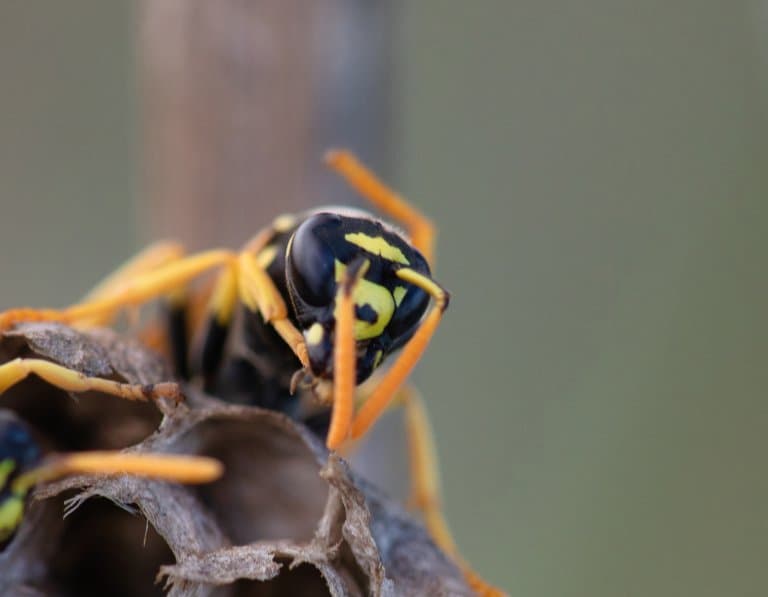
2. Boobies!
This bird was named after what happens when you type ‘5318008’ on your calculator and turn it upside down. And it’s just as funny to say now as it was when calculators were invented (Great tits could also have taken this spot, but boobies are bigger, and thus, more popular on the internet).
Keep in mind, if you’re going to look this up, it’s worth adding a clarifier, such as blue-footed, Nazca, or masked. There are Peruvian and brown Boobies too, but we can’t vouch for the search results on those.
These are large, derpy-looking seabirds from the Pacific and probably got their name for landing on ships where they were easily caught, giving them the reputation for being stupid.
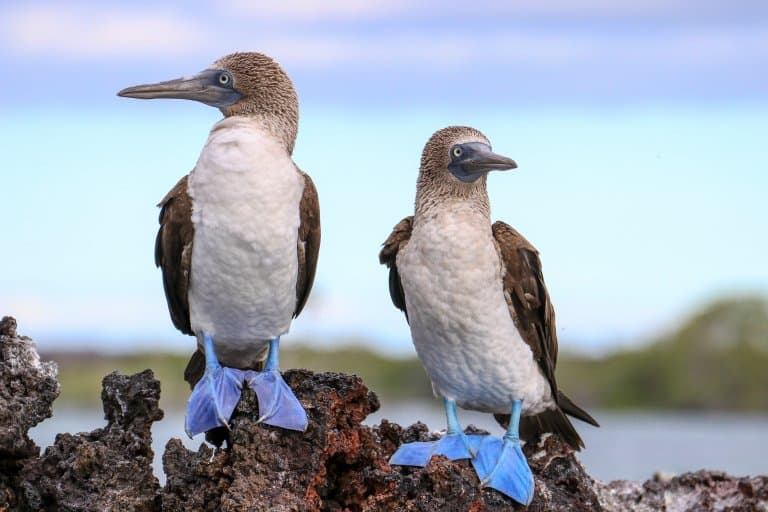
3. Shovelnose Guitarfish
The shovelnose guitarfish, Rhinobatos productus, is actually a ray, which inhabits warm waters off the Gulf of California.
It’s name comes from its rather long, pointed nose and flat guitar-shaped body. They were first considered to be a species of shark, because they have features of both sharks and rays.
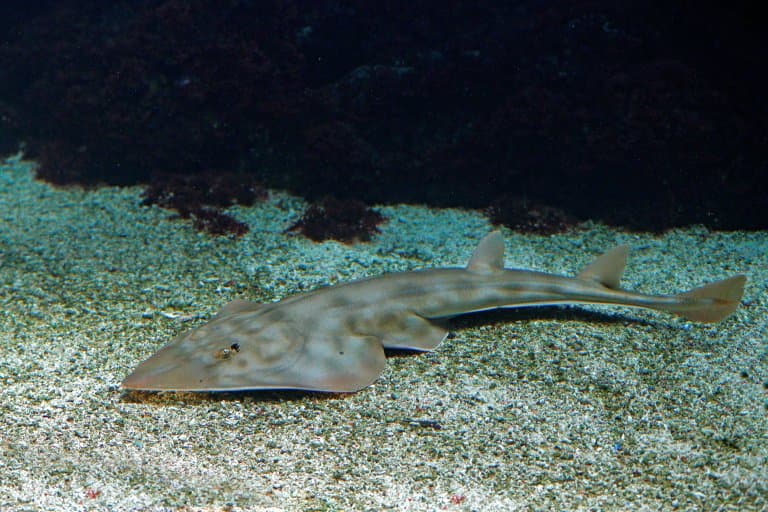
4. Agra vation
Agra beetles are small, arboreal insects found in the Neotropics. This particular species’ name apparently reflects how difficult it is to find out anything more about it, and other than the play on words, it’s hard to say what, if anything, makes it interesting.
Being beetles, they’re one of the hundreds of species in the genus, which might mean it’s going to be a while before we know anything else, despite being discovered in 1983.
Scientists enjoyed naming in this genus, as other species are named ‘Agra cadabra’ (Ag-rah kah-dab-rah),’Agra phobia’ (Ag-rah fo-bee-ah) and even ‘Agra schwarzeneggeri’, named after the actor Arnold Schwarzenegger.
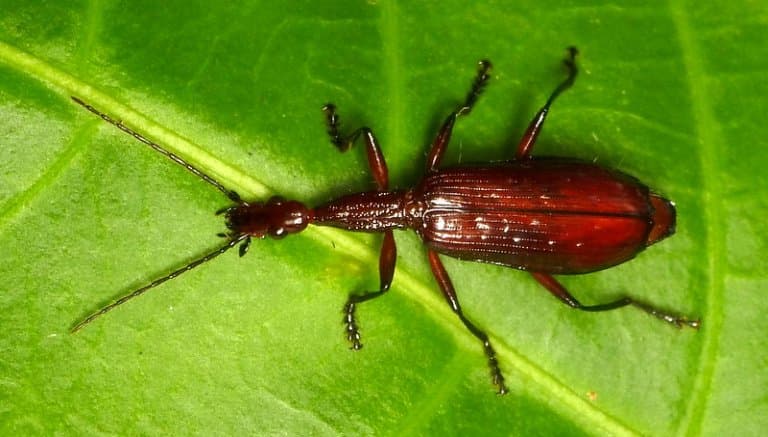
5. Sarcastic Fringehead
Named for its huge mouth and aggressive temperament, the sarcastic fringehead is a fascinating small saltwater fish, which exists in perpetual intense competition with others of its own kind.
The sarcastic fringehead is a species of blenny, which spend much of their time in their ocean floor dens. They have a ‘Demogorgon’ from Stranger Things mouth which rivals use in face-offs by slamming their huge, open mouths together in a strange ‘who has the biggest mouth competition’.
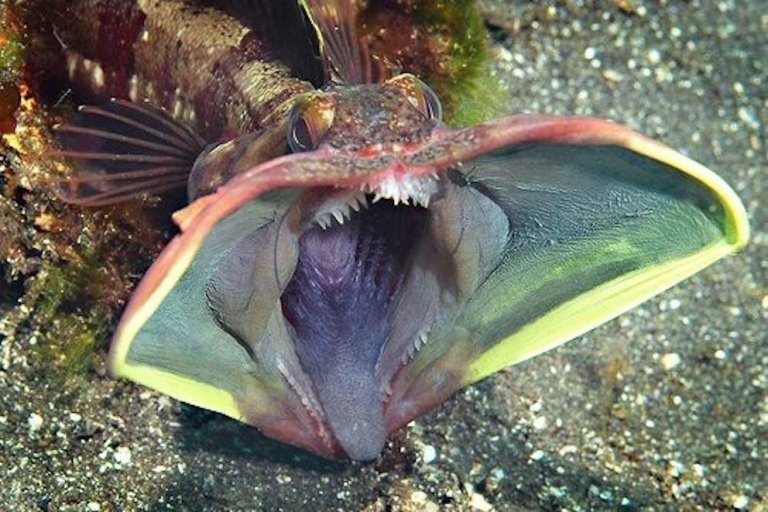
6. Gelae baen
In the quintessential and understated humour for which beetle researchers are notorious, the naming scheme for several species in the genus Gelae (pronounced, “jelly”) was conceived as a “whimsical arrangement of letters”. Along with G. baen, there are G. belae G. donut, G. fish and G. rol. Perhaps unsurprisingly, these were discovered in the US.
Gelae beetles are almost spherical and feed on slime moulds in North America. As cute as they are, they’re not as tasty as their names suggest, and it seems like someone may have been a bit hungry when they came up with the names for the five species currently known.
Even if they did taste as good as they sound, most of these beetles are under 3mm across, so you’d have to find a lot of them to be satisfied.
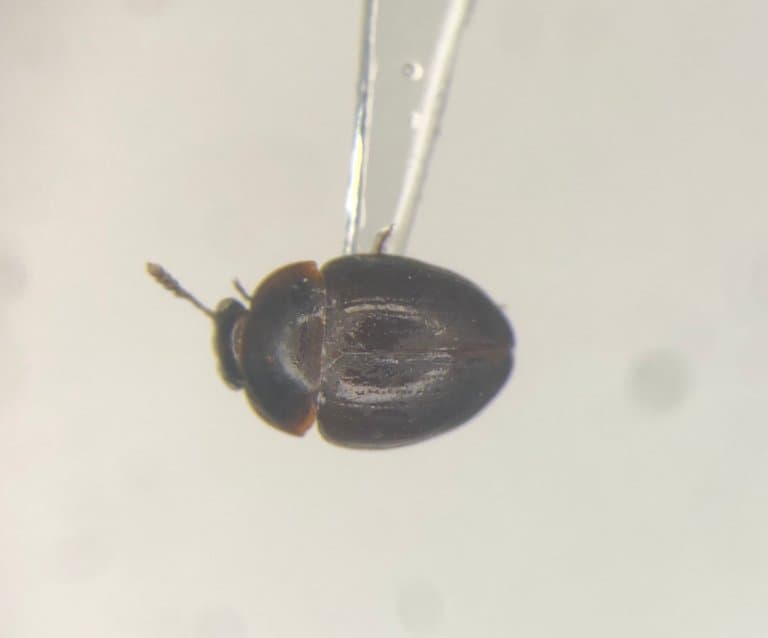
7. Bone-Eating Snot Flower Worm
Osedax mucofloris, also known as the ‘bone-eating snot-flower worm’, is actually a species of undersea worm first discovered in 2005.
It was found feeding on the carcasses of minke whales in the North Sea. Lovely.
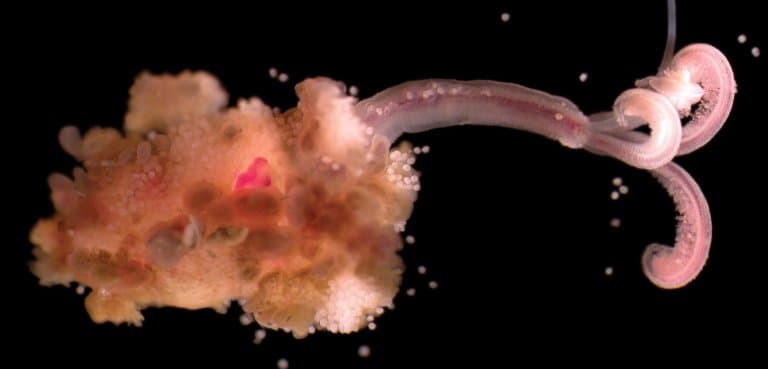
8. Boops boops
This is our first example of what’s known as a tautonym. Since a tautology is saying the same thing twice, a tautonym is when that thing is a name, and this time, the name refers to a fish. Boops comes from an ancient Greek word meaning “cow eye”. These cute little fellas occupy waters off the coast of
Europe and Africa and are thought to be a rare example of a vertebrate hermaphrodite.

9. Gorilla gorilla gorilla
The Western gorilla is a gorilla by name in both genus and species, which isn’t so uncommon, as we’ve already seen. The lowland subspecies, however, is differentiated from its closest relative, the Cross River gorilla (Gorilla gorilla diehli) with the addition of a third iteration of the name.
This is somehow supposed to simplify the issue but is very difficult to say aloud without sparking panic in your group.
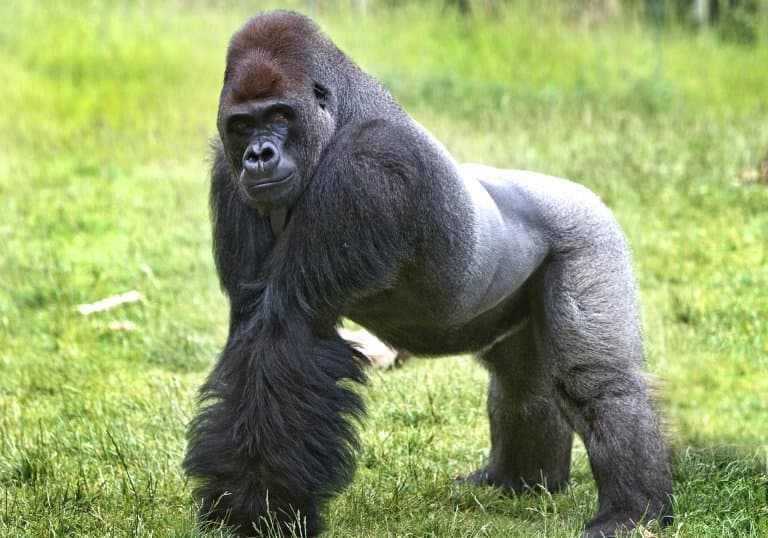
10. Monkeyface Prickleback
The monkeyface prickleback, also known as the monkeyface eel and blenny eel, is a nearshore fish with an elongated, eel-like body. These fish belong to the prickleback family, Stichaeidae, of which there are 17 species off the coast of California alone.
They are infamous for their amusing name, which is derived from their monkey-face-like appearance.
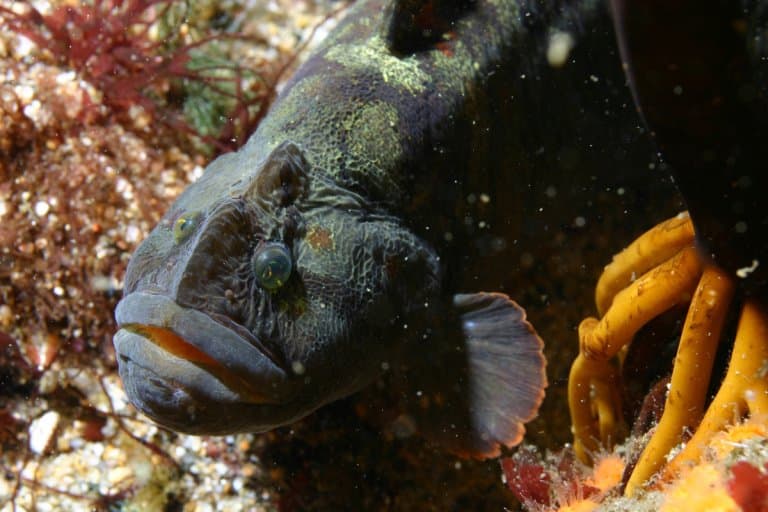
11. Sparklemuffin
Of all the animals this name could be attributed to, a spider probably wasn’t near the top of the list. However, as spiders go, this one really is a cutie. It’s a half-centimetre peacock spider; a genus of jumping spiders. They have exceptional eyesight and are reasonably intelligent for something so tiny.
This makes the name that much more demeaning, though because these spiders perform an intricate and colourful mating dance, it’s perhaps quite apt. It was one of two recently-discovered spiders in Queensland, in 2015. The other was nicknamed Skeletorus due to its white, bone-like markings on a black body.
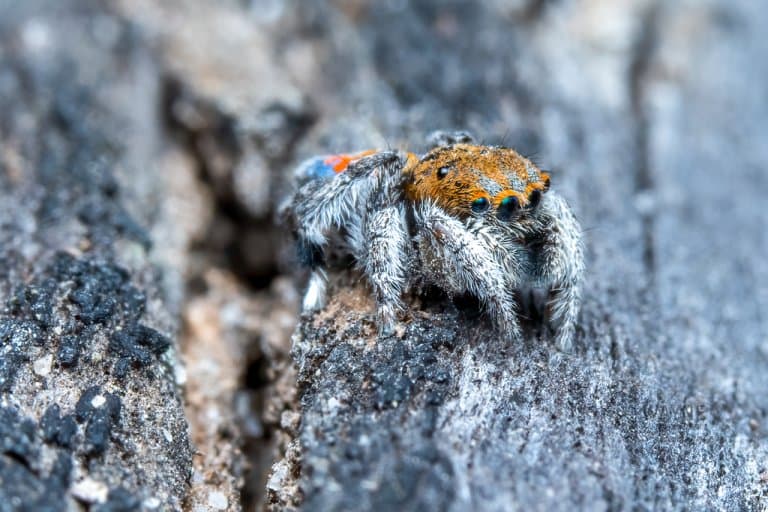
12. Clanga clanga
Not to be confused with the small pink creatures living on the moon with their soup dragon, whistling at one another, the greater spotted eagle, Clanga clanga is another recipient of a scientific tautonym.
That’s about the funniest thing about this otherwise very serious and vulnerable raptor species, which hunts wetland prey between their migratory points of Eastern Europe, South Asia, and East Africa.
The name comes from the Greek Klangos, with which Aristotle described as “a kind of eagle”.
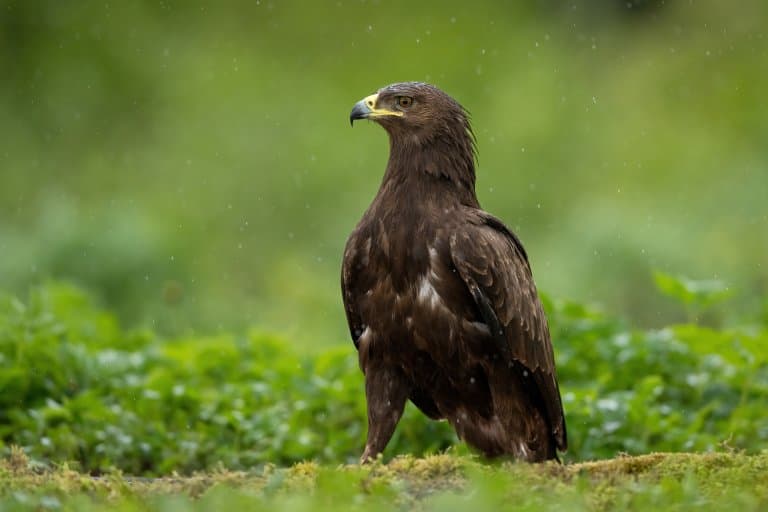
13. Fried Egg Jellyfish
Fried egg jellyfish are free-swimming ocean animals with bright yellow domes with trailing tentacles, and look exactly like a fried egg floating in the sea. They can be found throughout the open ocean.
Two species are referred to as fried egg jellyfish, Phacellophora camtschatica and Cotylorhiza tuberculate. This name comes from the bright yellow dome surrounded by a white or transparent membrane around the edges, making it look like a fried egg floating in the water.
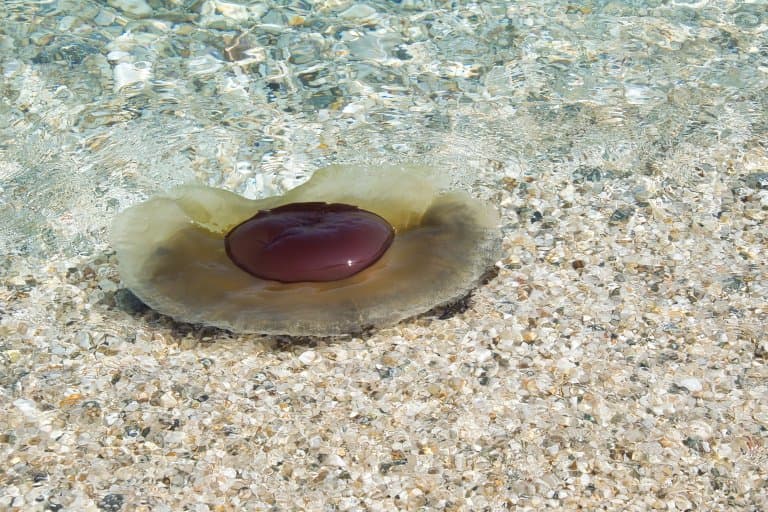
14. Vini vidivici
When humans move to a place, the animals usually suffer. Extinctions all over the world, of all types of animals, have been attributed to the destructive nature of human invasions. In the Polynesian islands, countless species of bird were hunted to extinction soon after the arrival of settlers, one of which was a large lorikeet in the genus Vini.
Despite the genus name being derived from a local Polynesian word, the ornithologist who named it couldn’t resist a play on the famous Latin phrase “Veni, vidi, vici”, tying the tragic destruction of the species to the nature of its demise and leading to its common name, the Conquered Lorikeet.
Sadly, as the name suggests, this bird is no longer with us.
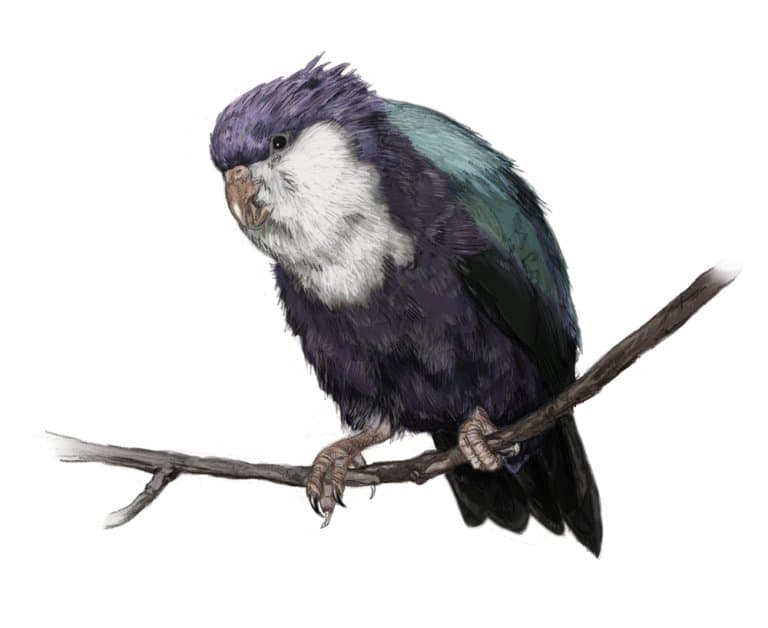
15. Screaming Hairy Armadillo
And sometimes there just isn’t time to come up with something clever, so you just have to say what you see. Of all the hairy armadillos, this is the smallest. And, presumably, the loudest, though it does make you wonder what the researchers were doing to the poor thing when they came up with that name.
These tiny armadillos are known to dig their way into the ground under dead animals and feed off the insects that are drawn to the carcass. In captivity, they’re ticklish, playful and altogether adorable.
While still hairy, they don’t tend to scream unless threatened, and that’s not a very nice thing to do to an animal just for a demonstration.
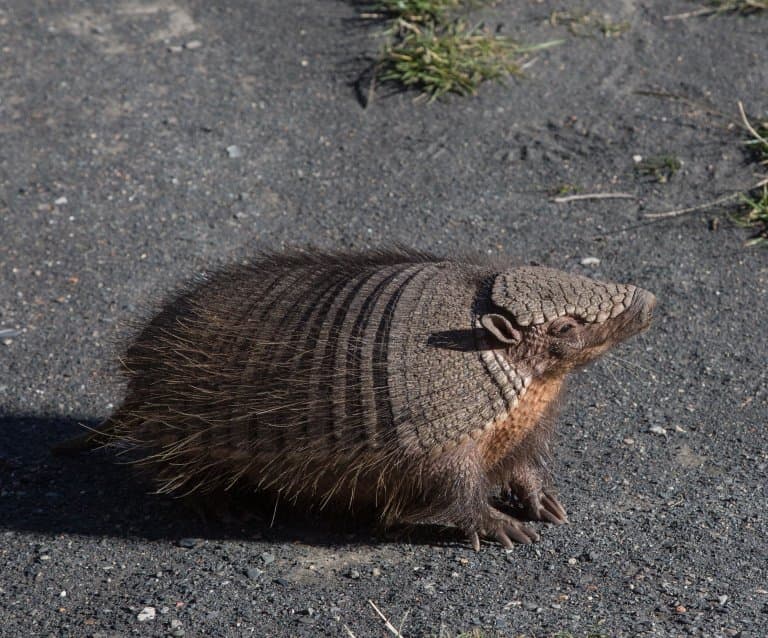
16. Verae Peculya
‘Verae peculya’ is a species of parasitoid wasp in the Braconidae family. There’s around 17,000 recognized species and many thousands more undescribed.
That’s why we can find virtually no real interesting information on this ‘very perculia’ wasp.
You see what they did there.
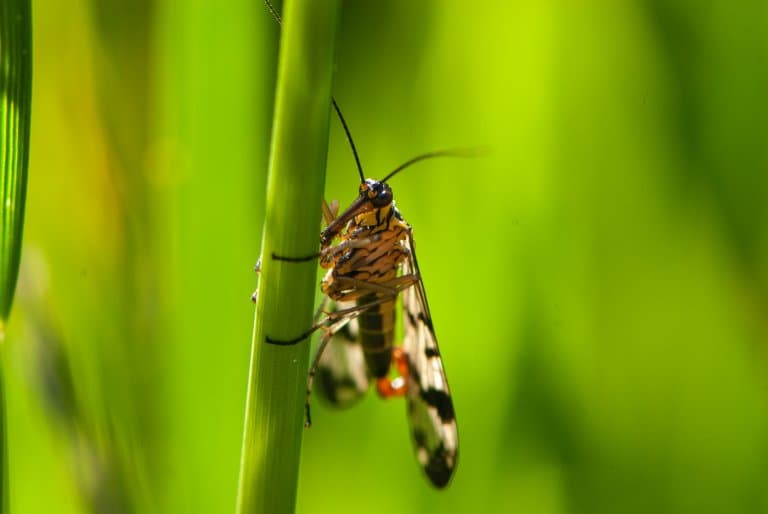
17. Blobfish
The poor blobfish is a deep-sea fish which inhabits waters just above the sea bed, off the coasts of mainland Australia, New Zealand and Tasmania.
They have been voted as the ugliest fish in the world, however, this popular impression is due to decompression damage to their jelly-like bodies when out of their natural high pressure environment.
So it’s all rather misleading, as at deep-sea, they look like a typical bony fish.
Blobfish is not a nickname, it’s their real name. The first blobfish found was nicknamed ‘Mr. Blobby’ by scientists and crew after being trawled during the NORFANZ expedition north-west of New Zealand.
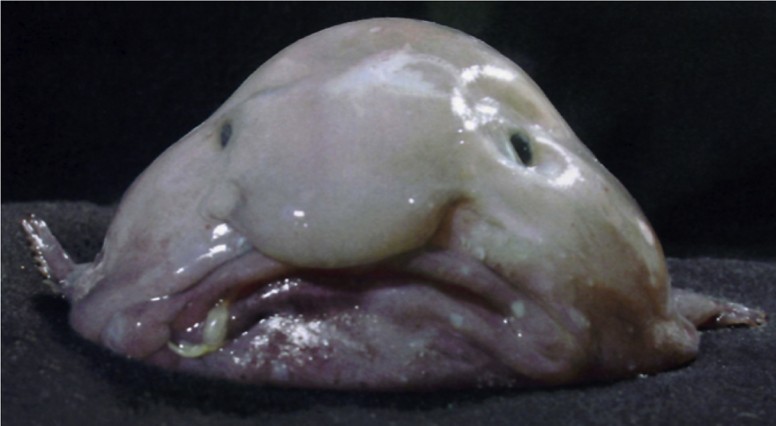
18. Pink Fairy Armadillo
The Pink Fairy Armadillo, or ‘pichiciego’ – is a desert-adapted mammal with a ‘pink’ bony armor shell, that is native to central Argentina.
It’s the tinniest species of armadillo in the world and is named for their unique shell that is pink due to a network of blood vessels underneath.
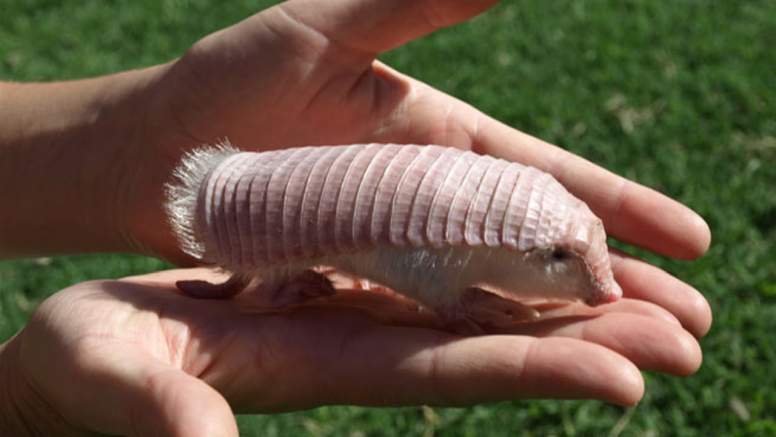
19. Tasselled Wobbegong
The oddly named tasselled wobbegong is a flat, seafloor-dwelling shark that effortlessly blends into its surroundings on coral reefs, waiting for unsuspecting prey to swim by.
Tasselled wobbegongs get their name from Australian Aboriginal language. The name is believed to mean either “shaggy beard” or “living rock.”
This has led to the species adopting other nicknames, such as “carpet sharks,” due to their ornate patterns and bearded jaws.
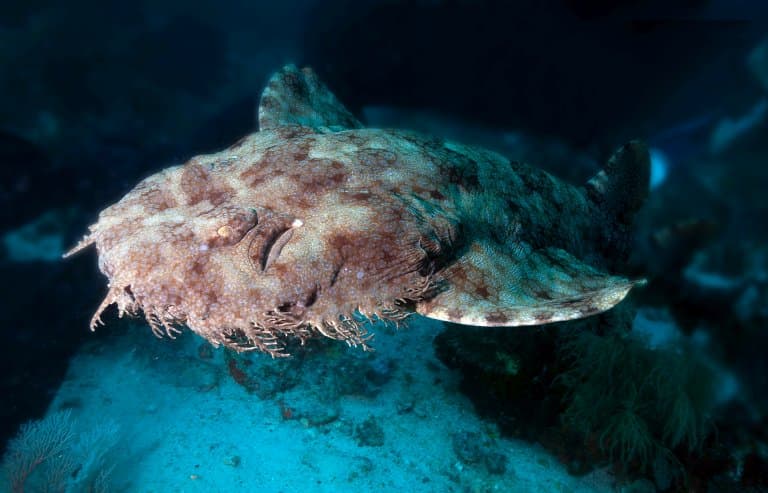
20. Satanic Leaf-tailed Gecko
The satanic leaf-tailed gecko is one of the smallest leaf-tailed gecko species. It has a horned head, red eyes and a tail with notches that helps it mimic the look of decaying leaves.
They get their name from its unique horned head and red eyes. The mouth is also a bright orange color, adding to the effect of this tiny lizard.
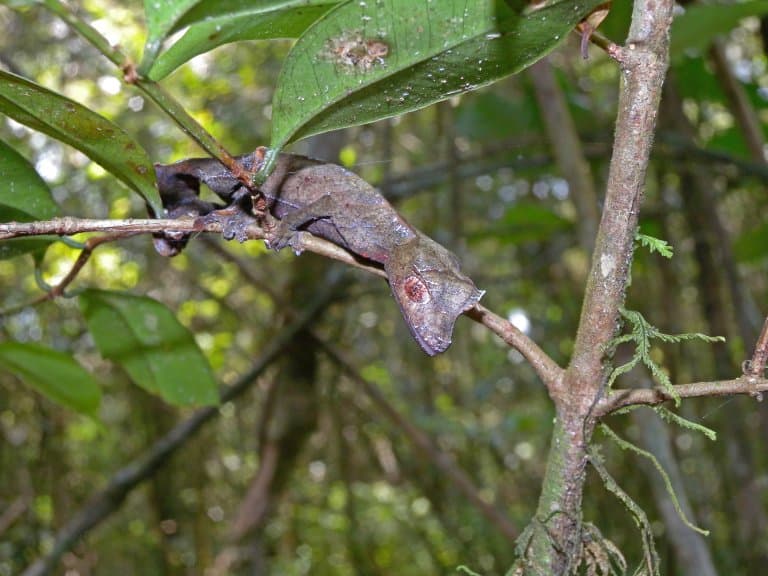
21. Dik-dik
A dik-dik is the name of any 4 species of small antelope that live in the bushlands of eastern and southern Africa.
Their hilariously childish name comes from the odd dik sound that female dik-diks whistle through their noses, when they are scared or threatened.
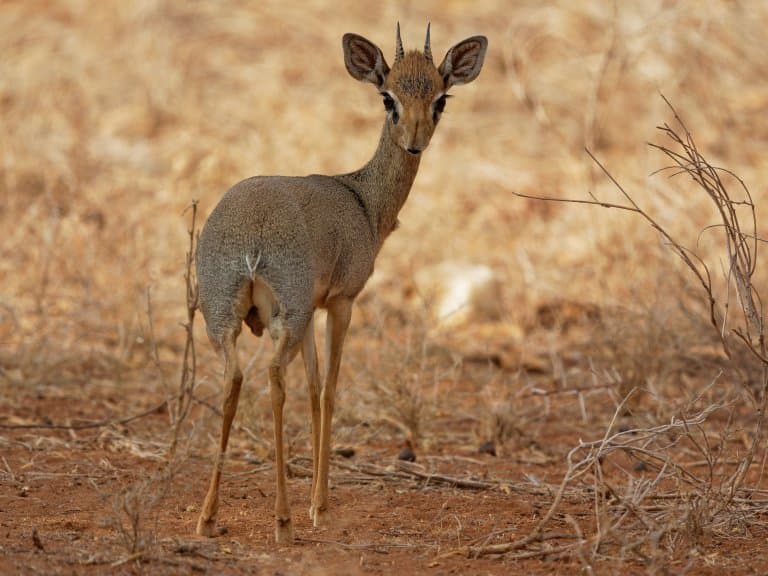
22. Tufted Titmouse
The tufted titmouse is not a mouse, but a small songbird species from North America.
It’s thought that their name comes from the Old English words ‘tit’ and ‘mase’, meaning ‘small bird’.
The word mase was lost in vocabulary and it morphed into a similar word, ‘mouse’. Apparently this switch was because this little grey-brown bird reminded people of the small rodent.
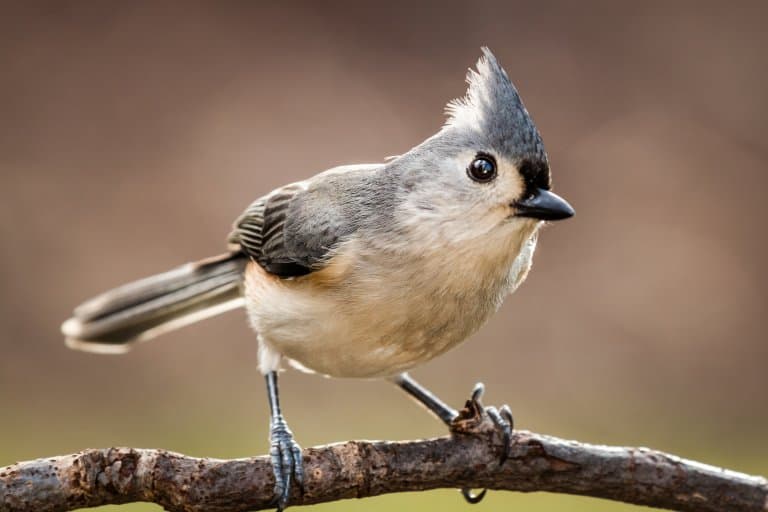
23. Cockchafer
The cockchafer is also known as the maybug, or maybeetle and are fairly large brown beetles in Europe, that are often seen swarming around streetlights in spring.
There are 3 amusing species of European cockchafers, that include the common cockchafer, the forest cockchafer, and the large cockchafer!
The name ‘cockchafer’ derives from 17th century usage of the word ‘cock’, referring to size rather than the body part. ‘Chafer’ was used in reference to any insect gnawing and damaging plants.
So their amusing name translates to ‘large plant-gnawing beetle’.
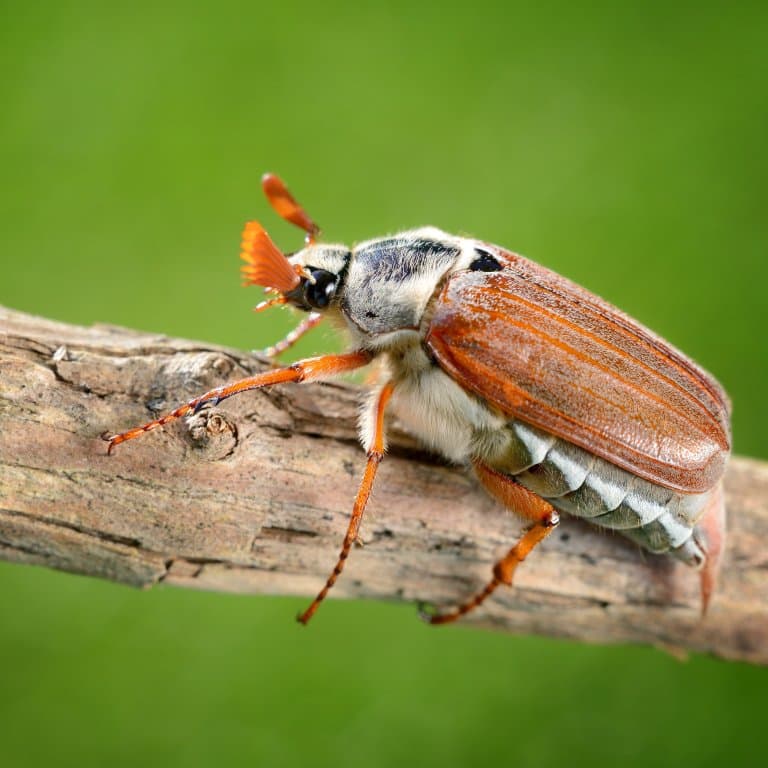
24. Ice Cream Cone Worm
Pectinariidae or ‘ice cream cone worms’ are a family of worms that build tubes, using grains of sand that sort of resemble ice cream cones, if you squint a bit.
These cones can measure up to 5 cms (2 inches) in lenth. So you wouldn’t get much ice cream.
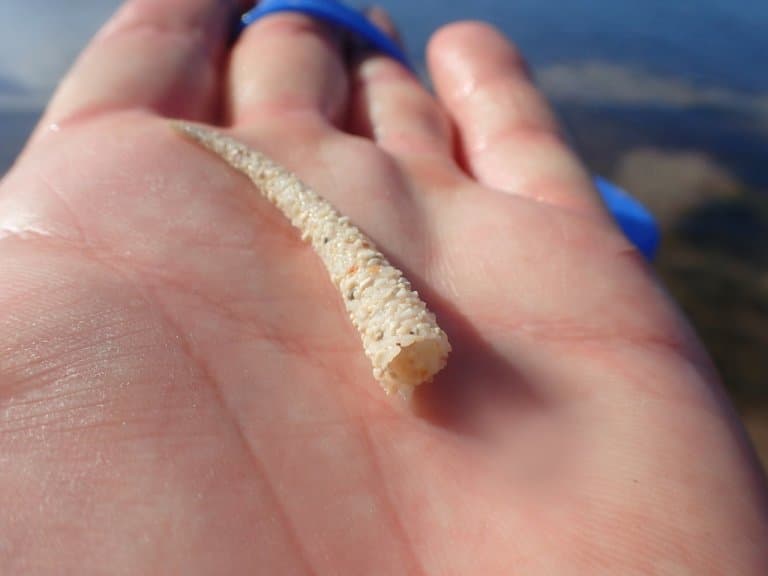
25. Slippery Dick
And to end our funny animals list on a real high point (?), the slippery dick is a small fish that lives in tropical waters in the Western Atlantic.
The slippery dick gets its unique name from the slippery mucus it excretes to help it evade predators.
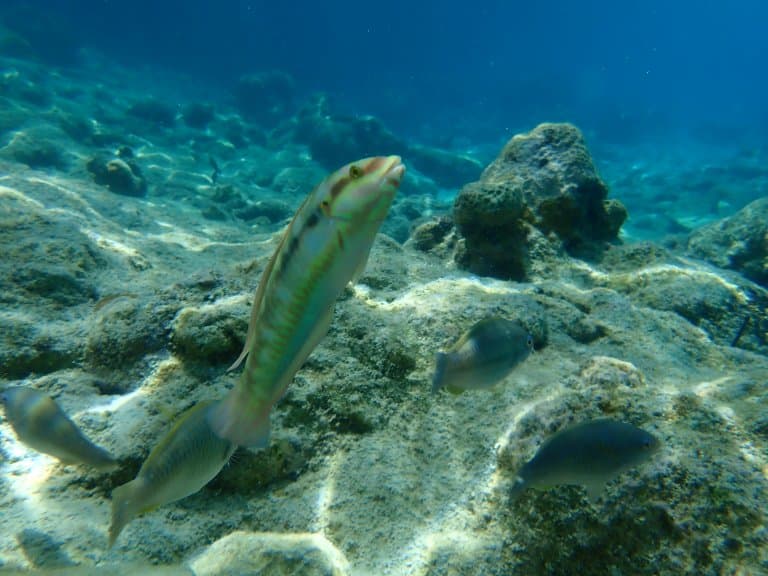
Final thoughts
There are international conventions in place to reduce the amount of freedom a person has over the naming of a new organism.
This might sound like a way of taking the fun out of science, but it’s an important push to standardize and simplify the way we classify the ever-growing complexity in biological research.
Without restrictions, things can get a bit out of control, and as we all know, there can be no power more frightening than an unrestrained taxonomist. Scientific vandalism occurs when species and genera are named and renamed and lost, or named twice, and all the hard work of the researchers who helped discover the animals is jeopardised.
It’s perhaps understandable, since taxonomy is the most tedious and frustrating discipline there is, but when it comes to logging official, scientific names, it’s usually safer and more respectful to play by the rules.
Of course, with common names, none of these rules applies, so feel free to go nuts with the silliest animal names you can imagine. Do you have anymore to stupid names to add to the list?
